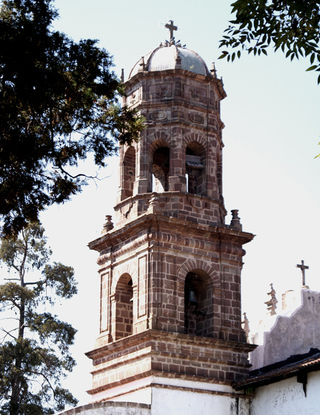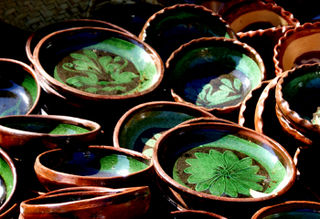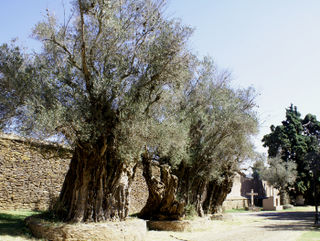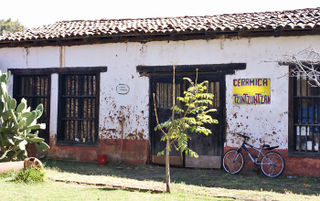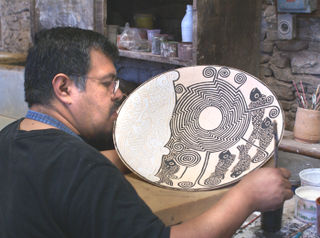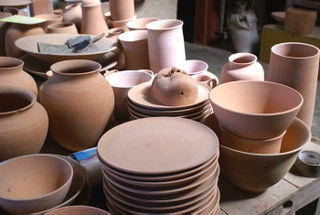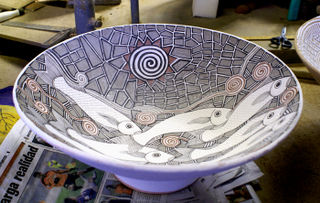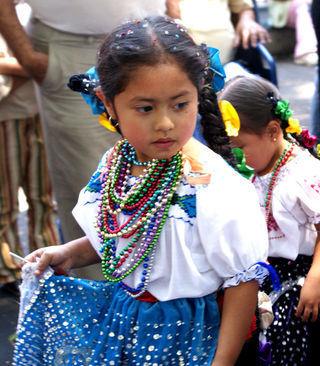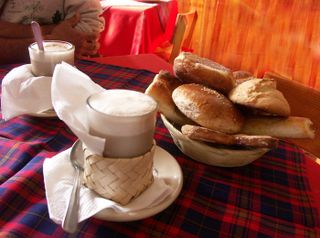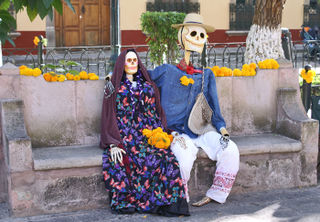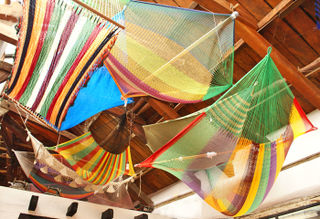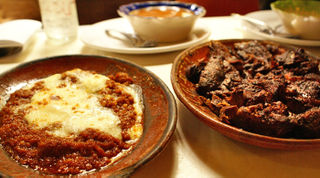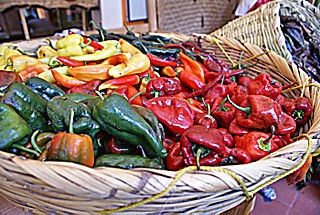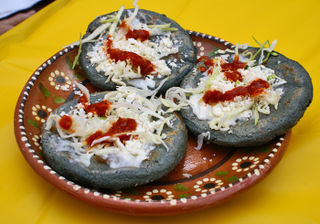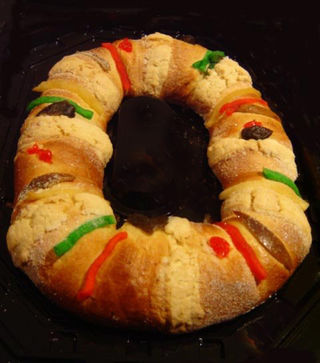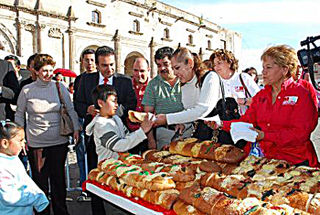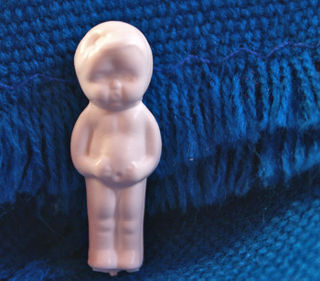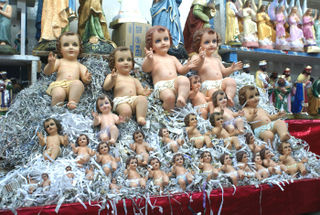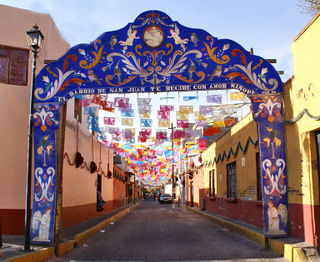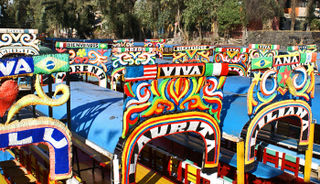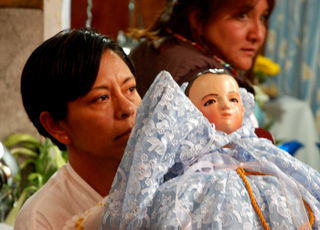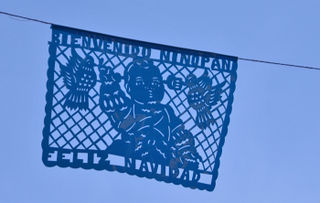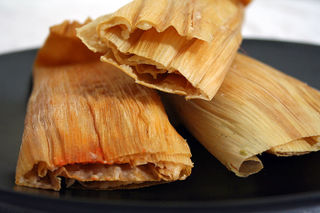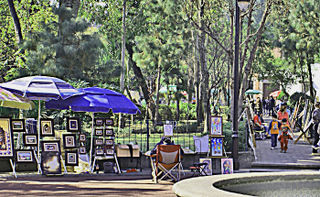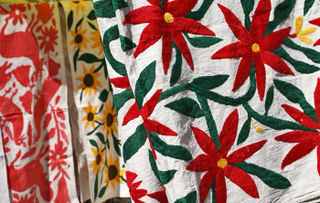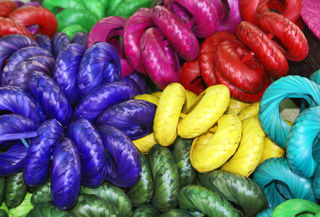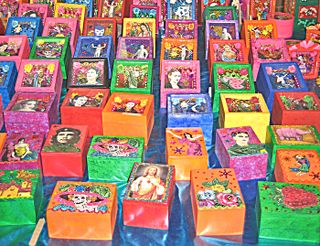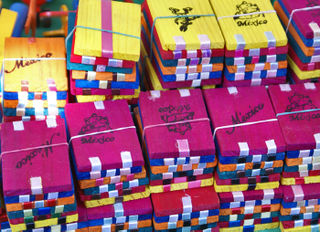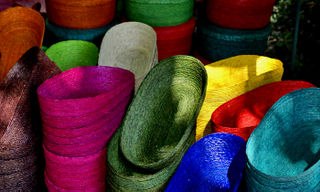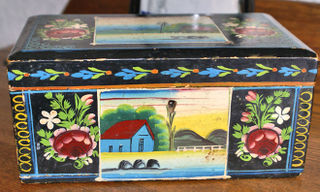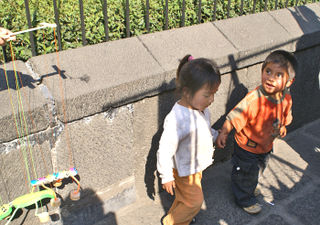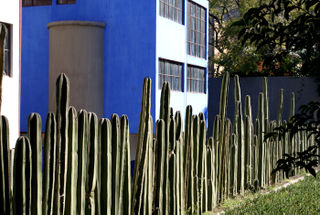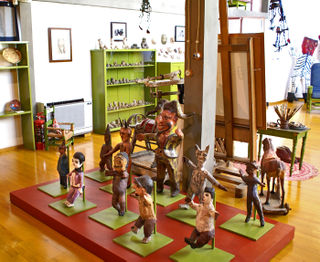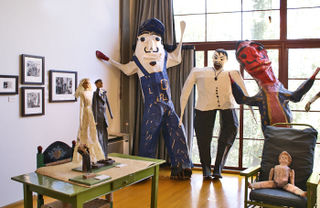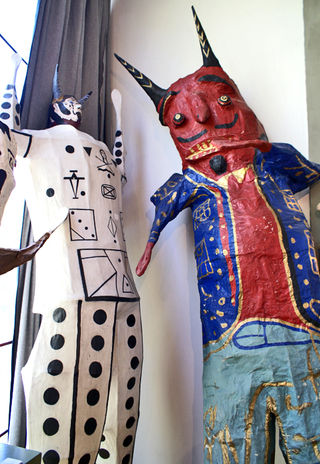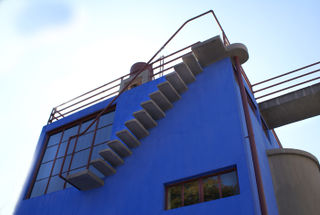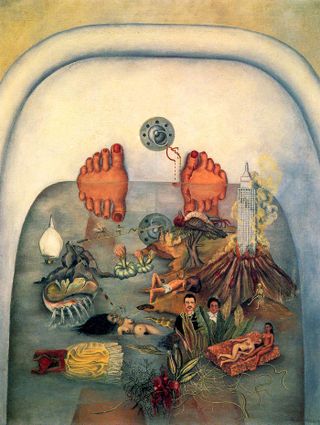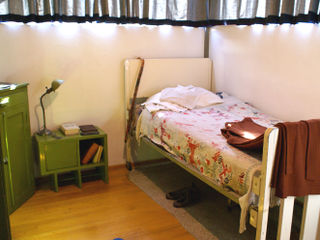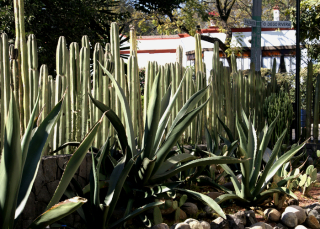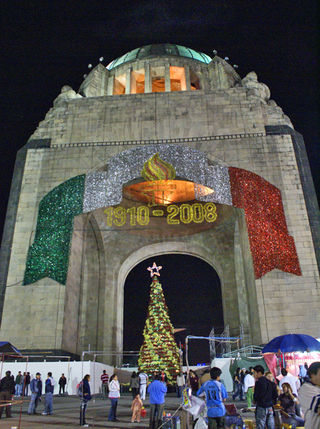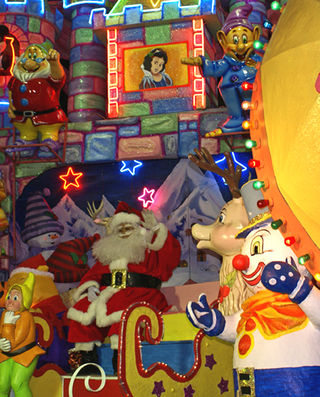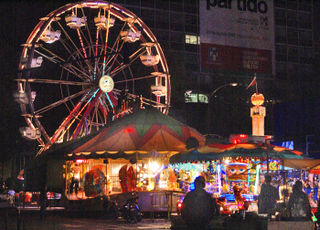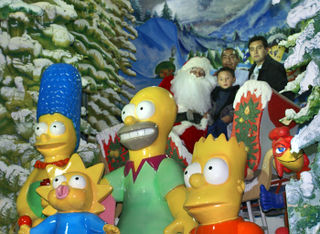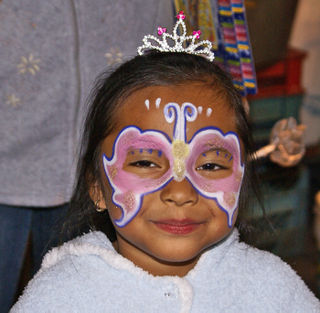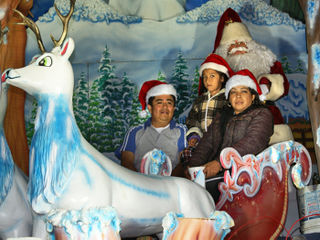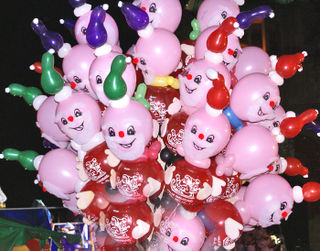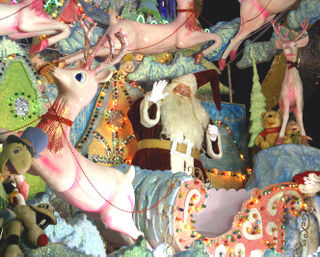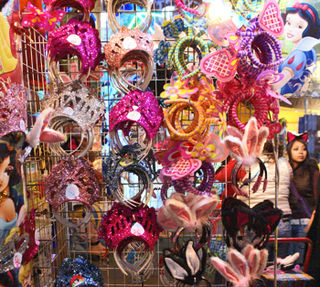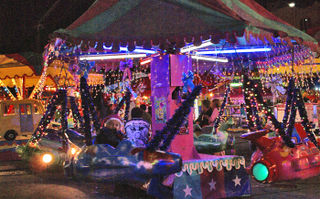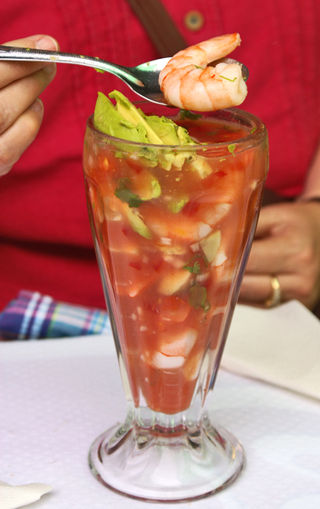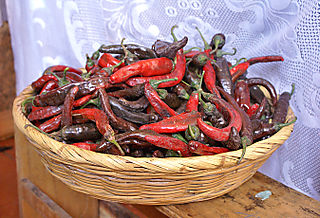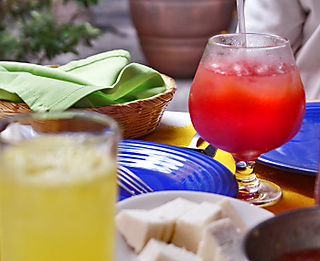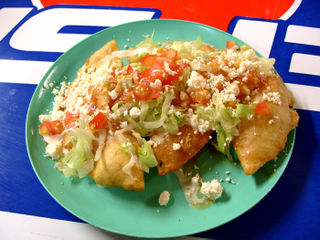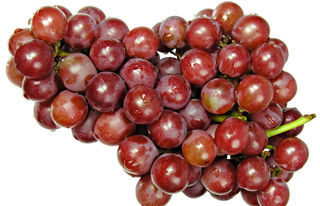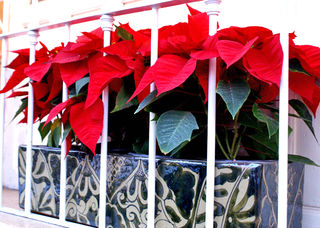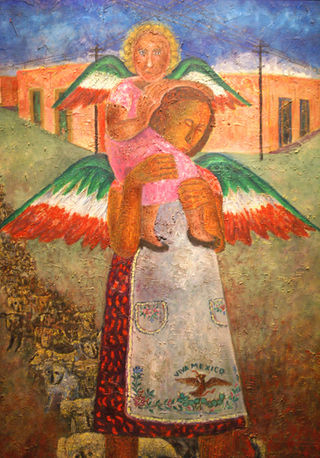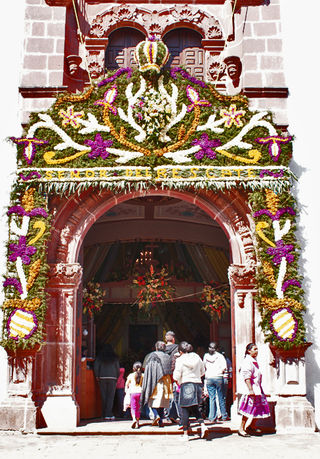
The entrance to the Templo de San Francisco (St. Francis Church), Tzintzuntzan, Michoacán, during the February 2009 fiestas patronales (patron saint's festivities) honoring El Señor del Rescate (the Lord of Rescue).
The indigenous community from four regions of Michoacán (the Zona Lacustre [Lake Pátzcuaro Zone], Cañada de los 11 Pueblos [the Ravine of the Eleven Towns], Ciénega de Zacapu [marshlands of Zacapu], and the Meseta Purhépecha [Purhépecha tablelands]) arrives each year during the week prior to Ash Wednesday to give homage to their patron, El Señor del Rescate (the Lord of Rescue). Not only do the Purhépecha gather from the four regions, people come from as far as Monterrey in Mexico's north to Oaxaca in Mexico's south. Cars and trucks with license plates from neighboring and distant Mexican states park side by side next to vehicles from Texas, California, Minnesota, Virginia, New York, and a dozen other states north of the USA border.
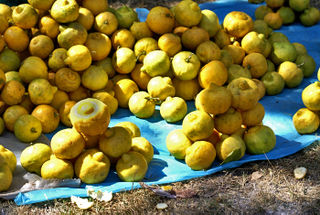
Bishop Vasco de Quiroga and other 16th Century Spaniards are credited with introducing limas to Mexico and Michoacán. Notice the round shape of this citrus fruit and the nipple of skin at its blossom end.
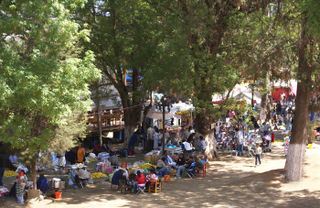
In the Atrio de los Olivos, crowds picnic, dance, and buy or sell artesanías (arts and crafts) and regional foods in the shade of ancient olive and cypress trees.
The Atrio de los Olivos (Atrium of the Olive Trees) of Tzintzuntzan's Templo de San Francisco, ordinarily a
peaceful, meditative, park-like setting, fills with the biggest
home-grown excitement of the year. Booths with traditional regional foods, particularly tamales de trigo (wheat and piloncillo [brown sugar] tamales, similar in taste and texture to bran muffins) and limas (a citrus fruit virtually unknown outside Latin America). Sweet, not sour; round, not oval, the lima can be eaten out of hand or squeezed to prepare agua fresca de lima.
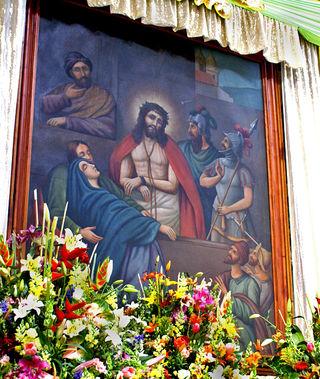
El Señor del Rescate: Tzintzuntzan's venerated Lord of Rescue. The original 16th Century painting burned in a church fire in 1944. It's said that the paint colors of this painting, a copy, are taking on the deep burnished tones of the original painting.
From the 16th to the late 19th Century, St. Francis of Assisi (the patron of the Franciscan order) was celebrated as the patron saint of Tzintzuntzan. Late in the 1800's, the church sacristan found an old painting of Jesus hidden away in storage. The town was under siege by a measles epidemic, and the sacristan begged permission to make a vow: if prayers to this image of Jesus put a stop to the epidemic, the sacristan himself would throw a town party, a huge party, in gratitude for the granted favor. That party is today's Fiesta del Señor del Rescate, still going strong after more than 100 years.
The fiesta is what's known in liturgical terms as a 'movable feast'. It's celebrated during what is known in other towns across the world as Mardi Gras or Carnaval–the last blowout party before Ash Wednesday and the abstinence of Lent's forty days. Here in rural Michoacán, El Señor del Rescate takes precedence over Carnaval.
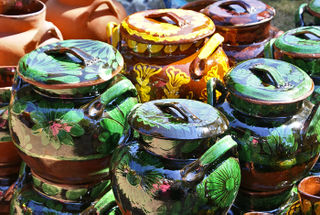
These traditional Tzintzuntzan clay pots, for sale at the fiesta, are for cooking beans. Look closely and you can see Mexico Cooks!' pink blouse reflected in the pots' high glaze.
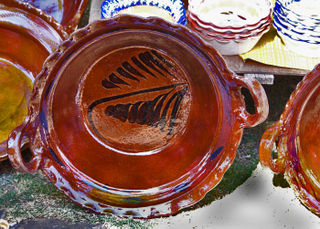
This huge, thick cazuela de barro (clay cooking vessel) measures approximately 45 centimeters (18") across the top, plus the handles. The cazuela came home with us and is already on display in our kitchen.
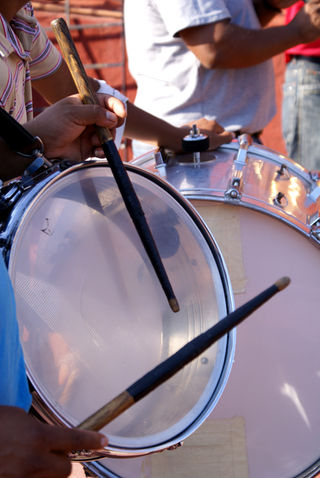
Before we even entered the church atrium, we heard the joyous sounds of a band. The music, from classical to the most current Mexican pop favorites, plays nearly non-stop for three days or more. It's tempting to stop and listen before going to the church, but as we heard a woman say to her adolescent children, "Primero le echamos una visita y después venimos a escuchar la música!" ('First we pay him a visit [to El Señor del Rescate] and then we come listen to the music!')
All of the bands are paid by contributions from various members of community organizations, including two groups paid by the local government offices. Traditionally, about a month before the events, the parish priest names several couples as a commission to help oversee the fiesta; these couples must have been married for 25 years before the current year's fiesta. In addition, townspeople who live 'away'–usually in the United States–send dollars to offset the cost of other bands and general costs.
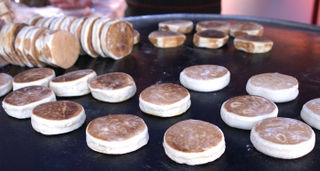
The fragrance of gorditas de nata (cream hotcakes, about 3" in diameter) baking on a comal (griddle) is all but irresistable. Delicious cream, sugar, and vanilla cakes, combined with the magic of a sun-dappled afternoon at a fiesta, always make Mexico Cooks! stop to get'em while they're hot.
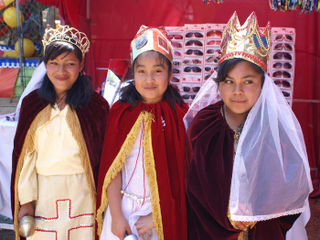
These little girls had to be wheedled, but ultimately they let Mexico Cooks! take their picture. They're dressed for la Danza del Señor del Rescate, which represents the fight between good and evil. The dance features a number of characters: queens, angels, and demons. Traditionally, girls wear beige, yellow, or white dresses, a red cape (which represents the robe Christ wears in the painting), and a crown. The devils, of course, represent evil. The angels represent a barrier that the devils can't pass. During the dancing, the devils jump out at the crowds to make jokes and scare children.
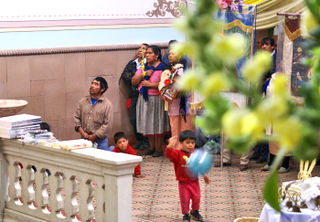
All day, every day of the fiesta, bells ring in the church to keep evil forces away. Hundreds of devoted pilgrims–some creeping the length of the church's center aisle on their knees–enter the Templo de San Francisco to give thanks, to ask for a personal miracle, or to be blessed by a crown placed on their heads with a prayer. The crowns represent both the blessings of Christ who has rescued the faithful and a petition for redemption.
We'll surely go back next year to Tinztzuntzan's Fiestas del Señor del Rescate. Plan to join Mexico Cooks! in celebrating these traditions.
Looking for a tailored-to-your-interests specialized tour in Mexico? Click here: Tours.
